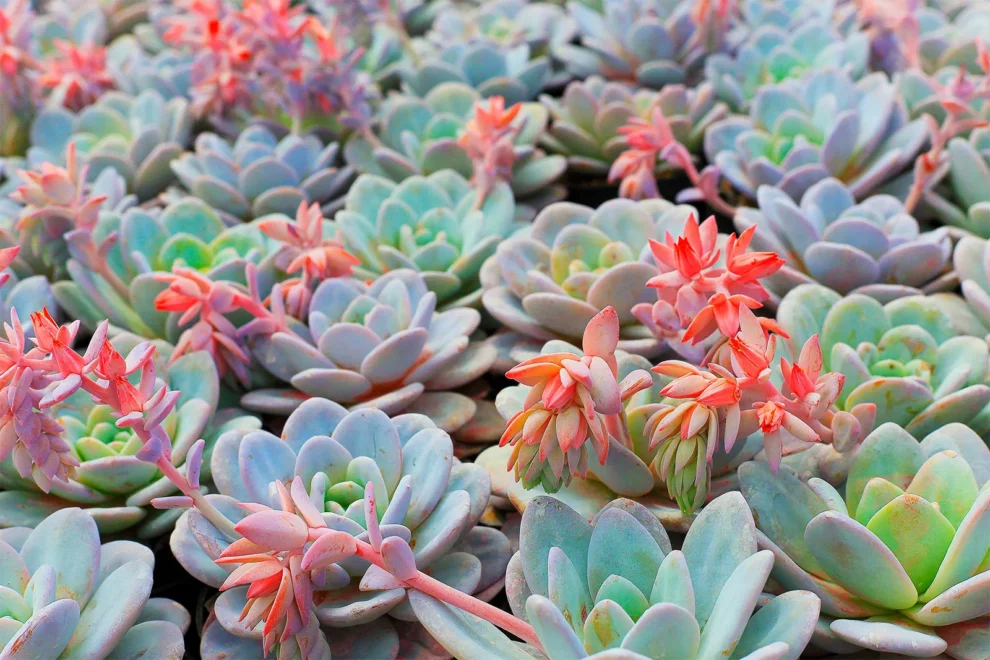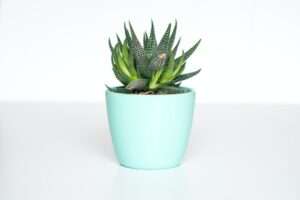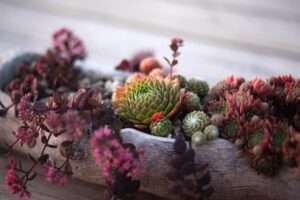In recent years, there has been a growing trend in the culinary world – the use of edible succulents. These unique plants, known for their fleshy leaves and ability to store water, have become a popular choice among chefs and home cooks alike. With their vibrant colors and interesting textures, edible succulents not only add visual appeal to dishes but also bring a unique flavor profile. From salads to desserts, these versatile plants have found their way into a wide range of culinary creations. In this article, we will explore the world of edible succulents, from their characteristics and nutritional benefits to their culinary uses and safety concerns.
What are Succulents?
Succulents are a type of plant that have adapted to survive in arid environments by storing water in their leaves, stems, or roots. They are known for their thick, fleshy leaves that retain moisture and allow the plant to withstand long periods of drought. Succulents come in a variety of shapes, sizes, and colors, making them a popular choice for indoor and outdoor gardens.
There are many different types of succulents, each with its own unique characteristics. Some common types include Aloe vera, Jade plant, Echeveria, and Sedum. Aloe vera is perhaps one of the most well-known succulents and is often used for its medicinal properties. Jade plant is a popular choice for indoor gardens due to its low maintenance requirements. Echeveria is known for its rosette-shaped leaves and vibrant colors, while Sedum is a hardy succulent that can withstand harsh weather conditions.
Edible Succulents: A Brief Overview
Not all succulents are edible, but there are several varieties that can be safely consumed. What makes a succulent edible is its non-toxic nature and the absence of any harmful compounds. Edible succulents are often used in salads, stir-fries, and even desserts. They add a unique texture and flavor to dishes, making them a popular choice among chefs and food enthusiasts.
Different parts of a succulent can be eaten, depending on the variety. The leaves are the most commonly consumed part, as they are fleshy and contain the most moisture. Some succulents also produce edible flowers, which can be used as a garnish or added to salads for a pop of color. The stems of certain succulents can also be eaten, either raw or cooked.
Nutritional Benefits of Edible Succulents
Edible succulents not only add flavor and texture to dishes but also offer several nutritional benefits. They are low in calories and fat, making them a healthy addition to any meal. Succulents are also a good source of vitamins and minerals, including vitamin C, vitamin A, calcium, and potassium.
Vitamin C is an antioxidant that helps boost the immune system and protect against oxidative stress. Vitamin A is important for maintaining healthy skin and vision. Calcium is essential for strong bones and teeth, while potassium helps regulate blood pressure and maintain proper muscle function.
The Culinary Uses of Edible Succulents
Edible succulents can be used in a variety of ways in cooking. Their unique texture and flavor make them a versatile ingredient that can be incorporated into both savory and sweet dishes. In salads, succulents add a refreshing crunch and a hint of tanginess. They can also be used as a topping for pizzas or added to sandwiches for an extra layer of flavor.
In addition to salads, succulents can be used in stir-fries, soups, and stews. Their fleshy leaves retain moisture when cooked, adding a tender texture to dishes. Some succulents, such as Aloe vera, can even be used in desserts. Aloe vera gel can be blended into smoothies or used as a topping for ice cream.
Different cuisines around the world also incorporate succulents into their traditional dishes. In Mexican cuisine, for example, nopales (edible cactus pads) are a popular ingredient in salads, tacos, and salsas. In Korean cuisine, succulents like Sedum are often pickled and served as a side dish. The possibilities are endless when it comes to using edible succulents in cooking.
Common Edible Succulents and their Flavor Profiles
There are several common edible succulents, each with its own unique flavor profile. Here are some examples:
1. Purslane: Purslane has a slightly tangy and lemony flavor. It is often used in salads or cooked as a vegetable.
2. Nopales: Nopales have a mild, slightly tart flavor. They are often used in Mexican cuisine, particularly in salads and tacos.
3. Aloe vera: Aloe vera has a refreshing and slightly bitter taste. It is often used in beverages and desserts.
4. Ice plant: Ice plant has a salty and slightly sour flavor. It is often used in salads or pickled as a condiment.
These succulents can be used in a variety of ways in cooking. Purslane can be added to salads or sautéed with garlic and olive oil. Nopales can be grilled and served as a side dish or added to tacos for a unique twist. Aloe vera gel can be blended into smoothies or used as a base for desserts. Ice plant can be added to salads or pickled for a tangy condiment.
Safety Concerns when Eating Succulents
While many succulents are safe to eat, there are some safety concerns to keep in mind. Not all succulents are edible, and some may contain toxic compounds that can cause illness if consumed. It is important to properly identify the succulent before consuming it.
In addition, succulents should be grown organically and free from pesticides or other harmful chemicals. If purchasing succulents from a store or market, it is important to ensure that they have been grown in a safe and clean environment.
It is also important to note that some people may have allergies or sensitivities to certain succulents. If you have any known allergies or sensitivities, it is best to consult with a healthcare professional before consuming edible succulents.
Preparing Edible Succulents: Tips and Techniques
When preparing edible succulents, there are a few tips and techniques to keep in mind. First, it is important to wash the succulents thoroughly before using them in cooking. This helps remove any dirt or debris that may be present on the leaves.
Next, it is important to remove any spines or thorns that may be present on the succulent. This can be done by carefully trimming the edges of the leaves with a sharp knife or kitchen shears.
Once the succulent is clean and free from spines, it can be used in a variety of ways in cooking. Succulents can be eaten raw, added to salads, or cooked as a vegetable. They can also be pickled or used as a garnish for dishes.
Growing and Harvesting Edible Succulents
If you are interested in growing your own edible succulents, there are a few things to keep in mind. Succulents require well-draining soil and plenty of sunlight to thrive. They should be watered sparingly, as overwatering can lead to root rot.
When harvesting edible succulents, it is best to pick the leaves when they are young and tender. This ensures that they have the best flavor and texture. It is important to only harvest what you need, as succulents can take some time to recover after being harvested.
Conclusion: The Future of Edible Succulents in the Culinary World
In conclusion, edible succulents have become a popular trend in the culinary world. With their unique flavors and textures, they add a new dimension to dishes and offer several nutritional benefits. From salads to desserts, succulents can be used in a variety of ways in cooking.
As more people become aware of the benefits and uses of edible succulents, it is likely that they will continue to gain popularity in the culinary world. With their vibrant colors and interesting shapes, succulents bring a visual appeal to dishes that is hard to resist. Whether you are a professional chef or a home cook, edible succulents are definitely worth exploring in your culinary creations.
If you’re interested in learning more about succulents and their various uses, you might want to check out this article on 10 Delicious and Nutritious Recipes for a Balanced Diet. While most people think of succulents as decorative plants, some varieties are actually edible and can be incorporated into your meals for added flavor and nutrition. This article provides creative recipes that showcase the versatility of succulents in the kitchen. From salads to smoothies, you’ll discover new ways to enjoy these unique plants.

















Add Comment